Understanding Competition Kites: Design and Dynamics
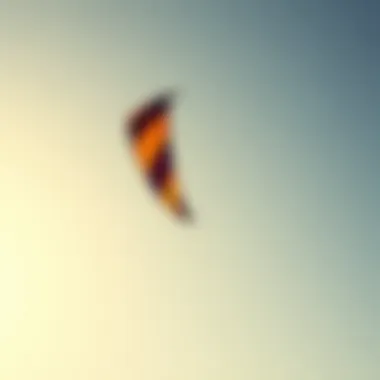
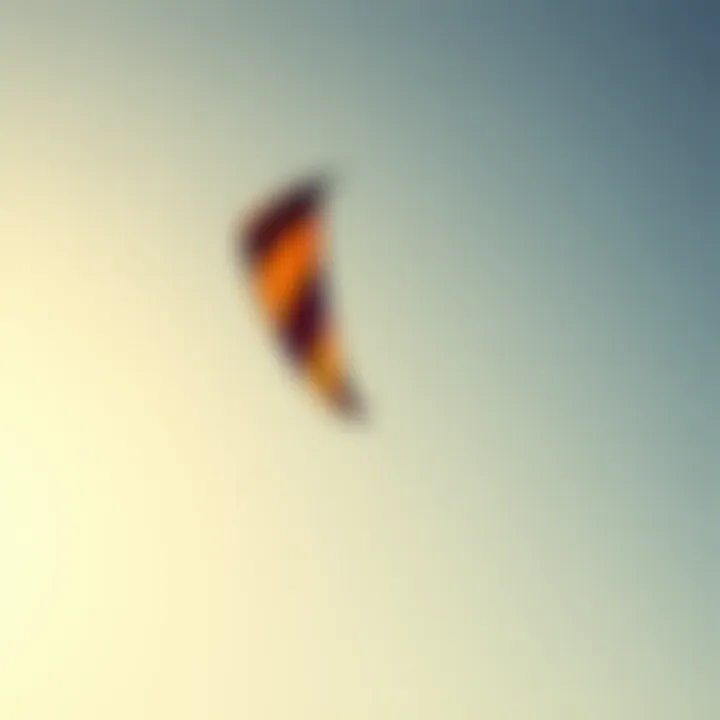
Intro
In the vibrant world of sports, few activities capture the spirit of adventure like kiteboarding. This adrenaline-pumping sport combines elements of surfing and flying, with kites soaring high above the waves. Among the enthusiasts, competition kiteboarding stands out, pushing both skill and equipment to the limit. The desire to glide deftly over the water while harnessing the power of the wind leads many to delve deeper into the realm of competition kites.
This article aims to unravel the complexities that accompany competition kites by examining not just their design but also their performance attributes. From materials used to the strategic decisions riders must make in the heat of competition, we will explore the evolution of these kites and the skills necessary to excel in this thrilling pursuit.
As we embark on this journey, we’ll also shine a light on the competitive landscape, discussing major events and effective training methods for aspiring kiteboarders. Buckle up, as we take flight through the exciting world of kiteboarding!
Gear and Equipment
Navigating the waters of competition kiteboarding requires a well-thought-out selection of gear. The right equipment is pivotal to any kiteboarder's success, whether you're just starting out or looking to refine your skills.
Essential Kiteboarding Gear for Beginners
For those new to the sport, it might feel like you’re trying to decipher a foreign language with all the terminologies and gear options available. To set off on the right foot, consider the following essentials:
- Kite: A beginner-friendly kite with a larger surface area is recommended to catch more wind, creating an easier learning curve.
- Board: Opt for a wider and more buoyant board. This helps in balance and stability, making it less daunting when you hit the water for the first time.
- Harness: The choice between a seat harness or a waist harness typically comes down to personal preference, but many beginners lean towards the seat style for added support.
- Safety Gear: A helmet and impact vest should not be overlooked; they can provide critical protection for beginners as they learn to control their kites.
- Control Bar and Lines: Make sure to choose a control bar that's suited for your size and strength to manage the kite effectively.
This gear combination allows beginners to become familiar with the basics of kiteboarding in a more forgiving environment.
Advanced Equipment for Experienced Riders
As you gain confidence and begin to push your limits, your equipment needs may evolve:
- High-Performance Kites: Switch to kites that suit specific conditions, such as freestyle or wave kites, depending on your personal style and the local environment.
- Lightweight Boards: Consider boards made from advanced materials like carbon fiber for increased performance and responsiveness.
- Custom Harness: Opt for a harness that provides maximum comfort and support, potentially integrating advanced features to aid in performance during competitions.
- Specialized Lines: Lighter, stronger lines can significantly impact handling and responsiveness, allowing for more sophisticated moves and tricks.
- Enhanced Safety Equipment: As tricks become more advanced, consider investing in impact shorts and different models of helmets.
The transition from beginner to advanced gear is crucial; it can affect not only your performance but also your enjoyment of the sport.
"Choosing the right gear is as important as understanding the wind. They are both your allies in kiteboarding."
Understanding the equipment available is essential, not just for performance but for enjoyment. Now, let’s move into the techniques and tips that will help riders of all skill levels hone their kiteboarding skills.
Prelude to Competition Kites
Kiteboarding isn't merely a recreational activity; it is an exhilarating sport that draws in enthusiasts from all walks of life. Understanding the realm of competition kites is pivotal, as it lays the groundwork for grasping the mechanics behind this thrilling discipline. Competition kites are designed for high performance, enhancing speed, control, and efficiency on the water. They are crucial for those looking to excel in competitive scenarios.
These kites don't just vary in size and shape; they incorporate cutting-edge technology and materials that can significantly affect a competitor's performance. Whether it’s a fast-paced race or a freestyle exhibition, the right kite can mean the difference between soaring high and hitting the water. With kiteboarding evolving rapidly, keeping abreast of these changes is vital for both new entrants and seasoned kiteboarders.
More than just a piece of equipment, competition kites symbolize the blend of art and science in the sport. Their designs often reflect a deep understanding of aerodynamics and material science, showcasing innovations that might appear too advanced at first glance.
In this exploration, we will delve into the defining elements of these kites, trace their history, and set the stage for understanding their performance attributes. A solid grasp of what competition kites are and how they came to be offers invaluable knowledge for anyone looking to delve into the exciting world of kiteboarding.
Defining Competition Kites
Competition kites can be understood as specialized kites explicitly engineered for performance in competitive settings. Unlike recreational kites, which prioritize fun and ease of use, competition models incorporate sophisticated designs, materials, and features that allow riders to achieve maximum output.
These kites are crafted not just for flight, but for agility and precision. Key features include:
- Canopy Design - Shapes that maximize lift and minimize drag.
- Bridle Systems - Adjustable setups for tuning performance based on wind conditions.
- Control Bars - Optimized for responsiveness, helping riders navigate turns and tricks effectively.
In essence, a competition kite is a finely-tuned apparatus aimed at showcasing not only the rider's skills but also the technology behind kite development.
Brief History of Kiteboarding Competitions
To appreciate the world of competition kites, it’s beneficial to trace its roots. Kiteboarding as a sport began taking shape in the 1980s, but it wasn't until the late 1990s that kiteboarding competitions became a fixture. Early competitors used kites that were more akin to those seen in traditional kiting; however, as the sport gained popularity, so did the demand for specialized kites designed for performance.
The advent of competitions created a new arena for innovation. Manufacturers began experimenting with materials and designs, refining their products to meet the specific needs that competitions demanded.
Painstaking iterations led to the introduction of different kite types – freestyle for tricks, race kites for speed, and big air for achieving immense heights. Let's not forget the first kiteboarding worlds in 1999, which kicked things off on the global stage and paved the way for various international competitions. This rich history illustrates not only the evolution of the kites themselves but also the competitive spirit that fuels the sport today.
"The evolution of competition kites is a testament to human ingenuity and our insatiable desire for speed and mastery over the elements."
As we embark on this journey through the realm of competition kites, the foundation of their design, historical progress, and the technologies that drive performance will become clearer, ultimately revealing the intricate tapestry that makes kiteboarding so captivating.
Design Characteristics of Competition Kites
Understanding the design characteristics of competition kites is crucial for anyone involved in kiteboarding. The intricacies of these designs can greatly impact performance, allowing riders to excel in competitive environments. From the shape and materials used to technological innovations, each element plays a vital role in how a kite performs under various conditions. By discussing specific elements like types of competition kites, material selection, and aerodynamics, one can appreciate the complexity and thought that goes into designing these high-performance tools.
Types of Competition Kites
Freestyle Kites
Freestyle kites are tailored specifically for executing tricks and maneuvers that demand agility and responsiveness. A key characteristic of these kites is their shorter lines and wider wings, which provide quick turns and enhance control during aerial stunts. This makes freestylers popular among riders who thrive on performing spins and flips. One unique feature of freestyle kites is their ability to generate lift quickly, allowing riders to leave the water with minimal effort. While their agility and responsiveness are pros, these kites often lack the power needed for sustained high-speed racing, making them more suited for specific freestyle events.
Course Race Kites
Focused more on speed and distance, course race kites are designed for optimal performance in competitive racing scenarios. They typically feature longer, narrower shapes that cut through the wind efficiently, helping riders achieve greater speeds. A standout aspect of course race kites is their construction, which often includes fixed bridle systems for stability. This ensures that even in choppy waters or gusty winds, a rider maintains control. However, their enhanced performance can sometimes come at the cost of maneuverability, making them less ideal for those who dabble in freestyle.


Big Air Kites
Big air kites have gained considerable popularity, especially among those who favor massive jumps and tricks that require substantial lift. One of the defining attributes of these kites is their large surface area, which helps in harnessing wind power effectively. Riders use big air kites to achieve extreme heights, pushing the boundaries of what’s possible in kiteboarding. The elevating power they deliver comes with a trade-off; their size may make them cumbersome for rapid changes in direction. Therefore, they best suit experienced riders who are comfortable handling larger equipment.
Material Selection and Technology
Fabric Innovations
The materials used in kite construction can dramatically affect performance. Innovations in fabrics like ripstop nylon and mylar offer enhanced strength without adding unnecessary weight. This helps kites resist tearing while maximizing flight efficiency. The benefit here is clear: a lightweight structure supports freer movement in the air, contributing to both height in jumps and speed in races. Although these materials can be pricier, their durability often justifies the investment for serious competitors.
Frame Materials
The frames of competition kites are frequently made from carbon fiber or fiberglass, each offering unique advantages. Carbon fiber frames are lightweight but tend to be more brittle, while fiberglass offers durability at a slightly heavier weight. These materials directly impact the kite’s performance, as they contribute to its stiffness and responsiveness. A well-constructed frame enhances the overall kite experience, though considerations around strength versus weight remain essential. Finding the right balance can sometimes influence a rider's choice of kite based on personal preference and style.
Weight Considerations
Weight is an essential factor in kite design that influences performance in various ways. Lighter kites allow riders to harness wind power more efficiently, which is particularly helpful in low-wind conditions. One might think that a lighter kite is always better, but it can also bring challenges like reduced stability in turbulent wind. Therefore, when choosing a kite, a rider must consider whether the intended conditions favor a lightweight design or if a heavier kite might hold an advantage in terms of stability and durability.
Aerodynamics in Kite Design
Shape and Structure
The shape of a kite fundamentally affects its flight dynamics. Kites with a concave structure tend to produce more lift, while those with a flatter profile achieve higher speeds. Each shape serves specific purposes, whether it's for maximizing height in jumps or navigating through racing courses. The kite’s structure influences how it interacts with the wind, affecting everything from stability to control. Knowing these variations helps riders make informed choices based on their competitive goals.
Performance Enhancements
Technological advancements lead to performance enhancements in kite designs. Features such as adaptive wing designs or adjustable bridle configurations allow kites to perform well under varying conditions. These innovations can result in faster speeds and improved maneuverability, making them favorable for serious competitors looking to edge out their opponents. However, adopting these technologies often requires a learning curve, and mastering them can be as crucial as the kite's inherent capabilities.
Wind Window Optimization
Wind window optimization is imperative for achieving peak performance. By designing kites to thrive in narrow or wide wind windows, manufacturers can address specific riding styles and preferences. A kite that excels in terms of wind efficiency can provide consistent power and control, making it a sought-after choice among competitive kiteboarders. Yet, it's a double-edged sword, as overly optimized kites may lose versatility in diverse environmental conditions.
"The design of competition kites nestles at the crossroads of science and artistry, intertwining materials, aerodynamics, and personal expression in the sport."
By unpacking these design characteristics, one can appreciate just how much thought goes into the world of competition kites, enriching both the experience of riding and the competitive spirit.
Performance Attributes of Competition Kites
Understanding the performance attributes of competition kites is paramount for anyone looking to grasp the essence of the sport. These elements directly impact not only how effectively a rider can compete but also their overall enjoyment and safety in the sport. Performance attributes are interconnected features that enable kiteboarders to make the most of their skills while harnessing the power of the wind. A kite’s speed, stability, and ability to generate lift and power significantly enhance a rider's performance, whether they are participating in gigantic competitions or simply enjoying a day on the water.
Speed and Agility
Speed is a critical factor in competitive kiteboarding. It's not solely about how fast a kite can move through the air, but rather how that speed translates to control and responsiveness on the water. A well-designed competition kite can respond to input with lightning-fast precision, allowing for sharp turns and rapid changes in direction. This agility is especially essential in freestyle competitions, where riders often perform tricks that require split-second timing and maneuvering.
The construction and design of the kite play a significant role in achieving both speed and agility. For instance, a smaller kite may provide more responsive handling, while a larger kite generally delivers increased lift and power at lower speeds.
- Speed allows competitors to cover larger distances in shorter times.
- Increased agility can lead to more impressive stunts and impressive performance.
- High-speed kites often lead to heightened excitement for both competitors and spectators alike.
Stability and Control
Stability is a kite's ability to maintain its position and direction in varying wind conditions, which is crucial for a successful performance. An unstable kite can be unpredictable and difficult to control, potentially leading to disastrous results during competitions.
To ensure stability, manufacturers often rely on geometric design principles and construction materials that can endure the stresses of high-speed maneuvers. A stable kite allows the rider to focus on their performance without worrying about unexpected shifts in direction caused by wind fluctuations. Achieving this control can mean the difference between a flawless jump and a wipeout.
- A balanced kite contributes to an easy flying experience for the rider.
- Stability supports precision, enhancing the quality of tricks performed.
- Strong control can prevent accidents, allowing for a safer ride.
Lift and Power Generation
Lift and power generation are the heart and soul of kiteboarding. The lift allows riders to rise above the water, execute aerial maneuvers, and perform gravity-defying tricks. A kite’s shape and design significantly influence how well it can generate lift based on wind conditions.
Power generation is equally important; it refers to the kite's ability to harness wind energy effectively. A kite that generates sufficient power can keep the rider elevated for longer periods and enable faster speeds. Riders often fine-tune their selection of kites depending on personal style, skill level, and environmental factors such as wind strength and water conditions.
- High-lift kites are essential for competitions requiring extreme jumps.
- Power generation affects the kite’s responsiveness in different wind conditions.
- Understanding lift dynamics can help riders choose the right equipment based on the day’s forecast.
"A keen understanding of performance attributes like speed, stability, and lift transforms a standard kite into a versatile tool of expression for competitive kiteboarders."
Each of these performance attributes contributes uniquely to what makes kiteboarding both thrilling and sometimes challenging. For aspiring competitors, grasping these characteristics can mean the difference between winning and just getting by. Competitors must evaluate these attributes regularly, tailoring their gear to match not only their riding style but also the unique conditions they encounter out on the water.
The Competitive Landscape of Kiteboarding
The world of competitive kiteboarding is a vibrant tapestry, intricately woven with diverse events and influential personalities. This landscape holds a significant place in our exploration of competition kites, as it illustrates not just the competitive spirit but also the evolution of the sport. The importance of understanding this landscape lies in its ability to demonstrate the various opportunities available for participants and the levels of skill required to thrive. Moreover, it helps aspiring competitors to grasp the nuances of competition, which can often influence their training regimen and overall approach to the sport.
Major Kiteboarding Competitions
When it comes to muscle and might in the kiteboarding realm, competitions serve as the ultimate platform for athletes to showcase their skills. Each event brings unique flavor and challenges, and here’s a closer look at some of the major competitions.
World Kiteboarding League
The World Kiteboarding League (WKL) is at the forefront of kiteboarding competitions. This league is known for its professional structure, encompassing both freestyle and racing formats. One standout characteristic of the WKL is its global appeal; it gathers competitors from all across the globe to vie for the top honors. This widespread reach not only elevates the competition but also expands the audience, making it a popular choice for kiteboarding fans and participants alike.
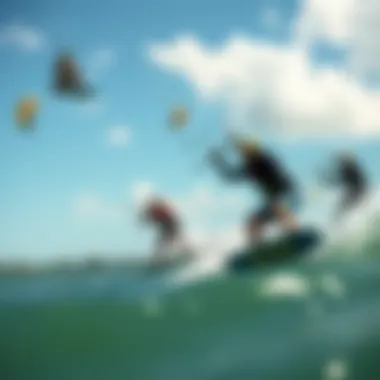
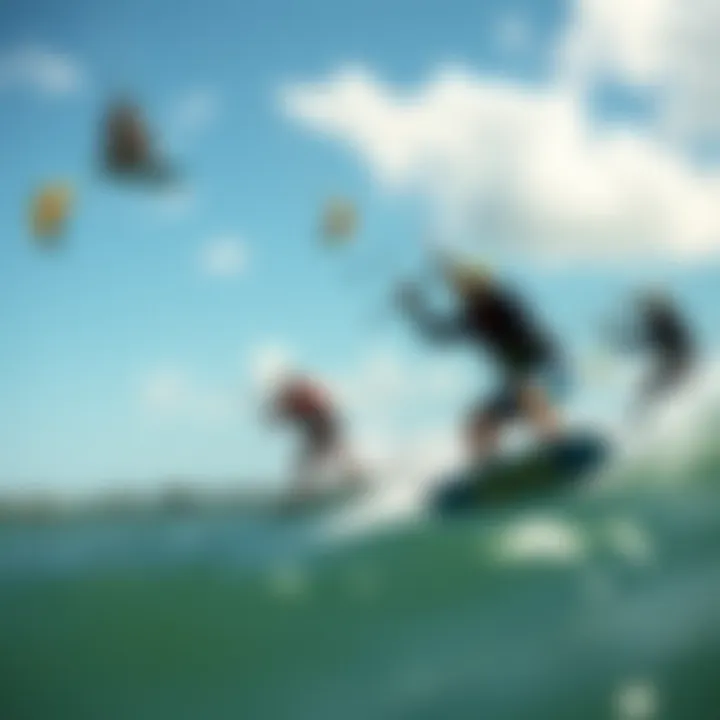
A unique feature of the WKL is its rigorous judging criteria, ensuring that performance quality remains high. Each round is packed with intensity as competitors strive to impress judges with their skills and creativity. The major advantage of participating in the WKL is the high-profile exposure it provides—athletes can gain recognition, sponsorships, and even a following, all of which can be life-changing for their careers. However, the pressure can be immense, often creating a high-stakes environment that may deter less experienced riders.
Red Bull King of the Air
The Red Bull King of the Air is more than just a competition; it's an exhilarating spectacle. Known for its focus on extreme big air kiteboarding, this event captures the imagination of both participants and spectators. One key aspect of this competition is the sheer ambition it encourages among kiteboarders. Riders aim to pull off the most daring tricks high above the water, pushing the limits of what is physically possible.
The unique feature of this event is its challenging conditions, often held in Cape Town, South Africa, where fierce winds can either make or break a competitor’s performance. The resulting adrenaline rush and the artistry involved make it a thrilling event. While it promotes creativity and personal expression, the tough environment can be a double-edged sword; some riders might thrive under these conditions, while others may find it overwhelming, thus creating a stark divide in performance levels.
Local and Regional Events
Away from the grandeur of global leagues, local and regional kiteboarding events play a pivotal role in the sport's ecosystem. These competitions are often more accessible and can serve as stepping stones for emerging talent. A key characteristic of local events is their community-oriented nature; they often foster camaraderie and support among participants.
The unique feature of these competitions is the emphasis on skill development rather than just winning. Many events include categories for beginners or recreational riders, allowing a broader range of participants to enjoy the experience. While they may lack the high stakes associated with larger competitions, they provide invaluable opportunities for learning and growth. Additionally, they often feature local sponsors and supporters, establishing a grassroots connection that can be essential for nurturing future champions.
Key Competitors and Influencers
The individuals who stand out in the competitive kiteboarding arena play a crucial role in shaping the sport's future. Competitors, ranging from seasoned professionals to promising newcomers, continuously elevate the sport’s profile. Their contributions extend beyond mere participation; they inspire others, set trends, and influence the evolution of both equipment and techniques.
Influencers, meanwhile, from social media stars to industry leaders, help spread the word about highlights from competitions and engage a wider audience. Their presence can significantly impact how competition kites are perceived and adopted, ensuring that the sport remains dynamic and relevant in today’s fast-paced world.
"Kiteboarding is not just a sport; it's a way of life, and learning from the best is key to pushing your own limits."
Skills Required for Competitive Kiteboarding
The world of competitive kiteboarding demands a diverse set of skills. Mastering these abilities can often mean the difference between success and falling flat, literally and figuratively. These skills include both the technical and strategic aspects of kiteboarding, which contribute to performance and overall safety during competitions. Understanding and training these skills not only enhances an individual's capability but also fosters a deeper enjoyment of the sport itself.
Fundamental Techniques
Launching and Landing
Launching and landing are crucial skills in kiteboarding. They form the foundation of safe and effective kite management. This technique ensures that a competitor can get the kite in the air without causing harm to themselves or others. The key characteristic of launching is timing – knowing when and how to pull the lines to safely elevate the kite into the wind. This practice is beneficial because a proper launch can set the tone for the entire session.
The unique feature of launching is the coordinated movement required between the kite and the rider. The rider must be aware of wind direction, and atmospheric conditions while also ensuring that there are no obstacles in the vicinity. A successful launch paves the way for great performance once the kite is airborne.
However, launching can have its disadvantages if done incorrectly; failure to launch properly can lead to entanglements or injuries, not to mention wasted time. Similarly, landing requires precision. A smooth landing with the kite at the right angle prevents crashes and potential damage.
Turning and Maneuvering
Turning and maneuvering are vital for navigating courses efficiently. This skill is all about controlling speed and direction, which can significantly impact a competitor's performance. The hallmark of effective maneuvering is smooth transitions, allowing the kite to flow with the wind.
In competitions, the ability to make precise turns can lead to better positioning against competitors. Riders who master this can exploit wind shifts and advantageously position themselves on the water. The unique aspect of turning lies in the coordination between the kite's movement and the rider's body positioning. A favorable turn can contribute to generating speed, while an awkward one might slow down racing times.
One consideration is that aggressive turning can sometimes lead to losing control, especially in high winds. Training for controlled maneuvers is essential to mitigate this risk.
Tricks and Stunts
Performing tricks and stunts is not merely showboating; it can significantly enhance a rider's score in competitions. This aspect of kiteboarding showcases creativity and skill, proving the rider can control the kite under various conditions. The standout feature of doing tricks is the level of challenge involved; they require strength, technique, and timing.
Tricks can make a competitor stand out in a crowded field and can often sway judges’ opinions. However, they also carry substantial risk. Attempting complex maneuvers without proper preparation can lead to serious accidents or falls. Thus, riders must practice extensively to safely execute these aerial displays.
Strategic Considerations
Understanding Wind Conditions
Wind conditions can affect every aspect of kiteboarding; from performance to safety, understanding this element is crucial. The key characteristic of evaluating wind is the ability to discern how it shifts and changes, giving riders a competitive edge. This knowledge can influence decisions on which equipment to use and what strategies to adopt during competitions.
Knowing how to read the wind helps competitors prepare effectively and adjust their tactics on the fly. The advantage here is that a rider who anticipates gusts and shifts can leverage these to gain momentum or execute maneuvers. Yet, not mastering this can mean riding under subpar conditions or missing out on better opportunities that wind presents.
Reading Water and Terrain
Reading the water and terrain involves understanding factors such as currents, waves, and other environmental aspects that can directly influence performance. One key feature here is identifying areas where conditions are favorable for certain maneuvers or turning points. This skill is beneficial because it helps anticipate changes and avoid hazardous areas.
Riders who can effectively gauge the water can prepare for what lies ahead, adjusting styles or tricks accordingly. The downside is that neglecting to analyze these factors can lead to surprises that hinder performance, making this skill an essential resource for anyone serious about competing.
Timing and Precision
Timing and precision is key in making the most out of every wind gust or swell on the water. The main element here is synchronization between the kite, the water, and the rider's movements. Riders must learn when to pull or release lines, turn, or land tricks, which significantly boosts their competitive chances. The advantage is that those who master their timing can seize opportunities that others might miss.
Unfortunately, miscalculating timing can result in crashing or missing ideal wind exposure that can hinder scoring. A focus on developing a strong sense of timing helps competitors flourish, leading to better performances overall.
Competitors should practice their skills and strategies relentlessly, for it’s in the details where progress is made and excellence is born.
Training Regimens for Competitors
Training regimens in competition kiteboarding are not just supplementary; they are the backbone of any serious competitor’s approach. To excel in this thrilling sport, practitioners must pay attention to multiple dimensions of preparation, including physical conditioning, mental readiness, and the vital role of coaching. This section will explore these elements in detail, shedding light on their importance, benefits, and considerations.
Physical Conditioning
Physical conditioning is central to the success of a kiteboarder. Engaging in a variety of workouts tailored to different muscle groups is essential. The nature of kiteboarding demands strength, endurance, and flexibility, making a one-size-fits-all approach to fitness insufficient. Here are some key components:
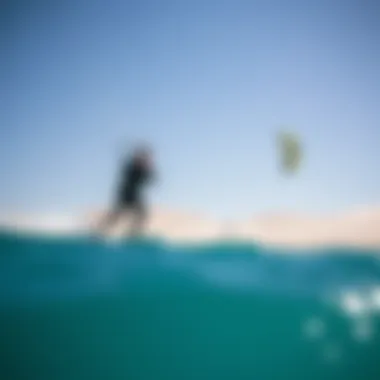
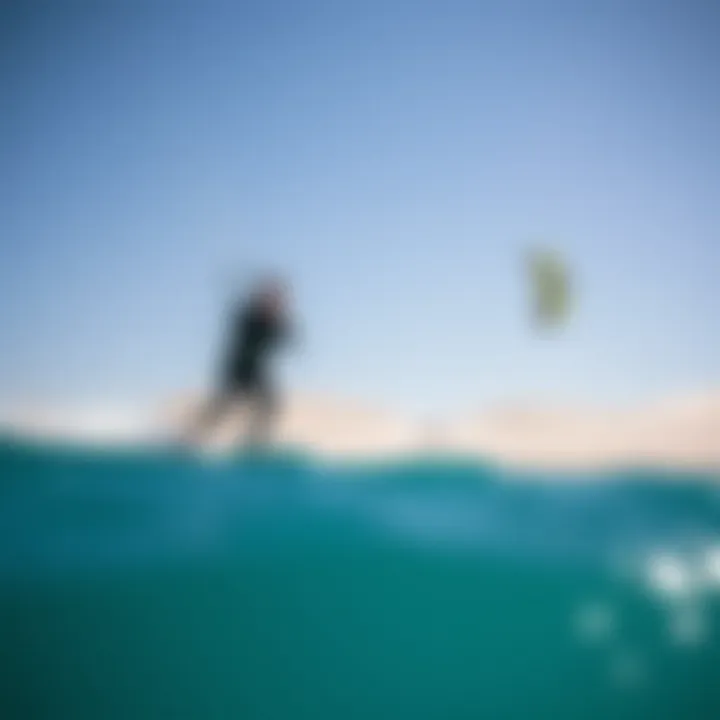
- Strength Training: Building core strength is critical. Without a strong core, maintaining balance and control while maneuvering in dynamic conditions becomes quite difficult. Exercises like planks, squats, and deadlifts can aid greatly in this area.
- Endurance Workouts: Kiteboarding often takes place in various wind conditions, where stamina plays a crucial role. Integrating cardio workouts, such as running, swimming, or cycling, can help endurance levels.
- Flexibility: This aspect cannot be overlooked. Stretching routines or yoga can enhance flexibility, crucial for achieving those flashy tricks and maintaining overall mobility during prolonged sessions on the water.
Having a consistent training schedule, shifting intensity based on seasonal conditions or event schedules, allows for adaptation and helps prevent injuries.
Mental Preparation
While physical prowess is necessary, mental preparation is equally important. The pressures of competition can be daunting, and a kiteboarder's mindset can make all the difference. Developing a focused, resilient mental state contributes to better performance. Here’s how mental conditioning usually plays out:
- Visualization Techniques: Good competitors often spend time visualizing their performances. Imagining every maneuver can facilitate muscle memory. It prepares the mind for the conditions of actual competition, making the experience less intimidating.
- Mindfulness Practices: These practices help in managing stress and maintaining focus. Being in the moment allows kiteboarders to respond to external factors, like rapidly changing wind conditions, more effectively.
- Setting Goals: Having clear, achievable goals can motivate competitors. Whether it’s mastering a new trick or improving overall performance, setting these targets keeps the focus sharp.
Coaching and Mentorship
Lastly, coaching and mentorship form a significant part of any competitor's training regimen. A knowledgeable coach can provide insights that a novice may not recognize on their own. Here are several reasons why this relationship is so valuable:
- Skill Development: Coaches bring expertise to the table, helping competitors refine their techniques and approach. They can offer constructive feedback that is vital for improvement.
- Structured Learning: Having a mentor often comes with an organized training plan tailored to the individual’s strengths and weaknesses. This structure minimizes the risk of injury and enhances skill acquisition.
- Emotional Support: Competitions can be stressful. A good coach understands this and helps competitors handle pressure, fostering a supportive environment that enables them to thrive.
"Training isn't just about physical exercise; it is about sharpening every aspect of a competitor's approach. Mental and coaching elements are just as integral as conditioning the body."
Safety Considerations in Competition Kiteboarding
Safety is paramount in the thrilling and often unpredictable world of competition kiteboarding. As kite sizes increase and wind conditions shift in the blink of an eye, understanding safety considerations can mean the difference between an exhilarating ride and a harrowing accident. In this segment, we delve into various aspects of safety, focusing not just on gear and equipment but also on an awareness of the surroundings. Proper safety measures lay the groundwork for competitors to push their limits while remaining within bounds of safety, preserving both their own well-being and that of others in the environment around them.
Personal Safety Gear
Impact Vests
Impact vests serve a crucial role in kiteboarding, providing essential buoyancy and protection during aerial maneuvers. These vests are designed to minimize injury upon impact with water, particularly when performing high-risk tricks or during hard landings. A key characteristic of impact vests is their buoyant construction, often composed of lightweight foam that not only cushions impacts but also keeps the rider afloat.
The unique feature of these vests is the combination of flexibility and protection they offer. Unlike life jackets, impact vests allow for greater mobility while still offering ample safety. This makes them a popular choice among competition kiteboarders. However, it's essential to note that while they provide a layer of protection, they shouldn't be seen as a complete substitute for other safety measures. Riders should always combine the use of impact vests with other safety gear.
Helmets
Helmets are another vital piece of gear for kiteboarders. They protect against head injuries that can occur from unexpected falls or collisions with the kite or board. A key characteristic of helmets used in kiteboarding is their design, which often includes a snug fit and ventilation to keep the head cool during intense sessions.
The unique feature of these helmets is that many come equipped with specialized padding to absorb shock effectively. Some models even enhance visibility with reflective materials. While a good helmet can greatly decrease the chance of serious head injury, it’s important to remember that not all helmets are created equal. Choosing a helmet designed specifically for water sports ensures better performance and protection than a standard biking helmet would.
Safety Leashes
Safety leashes are an indispensable element in the world of kiteboarding, providing a connection between the rider and kite, thus preventing runaway kites during a crash or a loss of control. Their main characteristic is high tensile strength, ensuring they withstand the forces exerted on them during typical use.
An important feature of safety leashes is the quick-release mechanism, which allows the rider to detach from the kite in emergencies. This can be a lifesaver, especially in adverse weather conditions or when getting tangled in the lines. However, it’s also crucial to understand the load your safety leash can handle. Not using the appropriately rated safety leash can lead to failure in critical moments, potentially leading to dangerous situations on the water.
Environmental Awareness
Understanding Local Regulations
Understanding local regulations is key for kiteboarders, particularly in competitive settings where adherence can affect both safety and image. Each location may have specific rules regarding kiteboarding zones, times, and even gear requirements. The hallmark of these regulations ensures fair play and protects both the environment and its users from potential hazards.
A unique aspect of this understanding is the increased awareness of wildlife regulations and natural preservation efforts. Kiteboarders who respect these rules not only keep themselves safe but also promote a positive sporting image among local communities. Moreover, failure to adhere to local regulations can result in fines or, worse, permanent bans from prime kiteboarding locations.
Identifying Hazardous Areas
Identifying hazardous areas is another essential skill for any kiteboarder. This involves being aware of both the water conditions and surrounding land, such as rocky outcroppings, strong currents, or shallow areas that may pose a risk. A primary characteristic of recognizing hazardous areas is the ability to read the conditions presented by the wind and water—understanding how water breaks, the ripples in the surface, and even chatter from wind can all signal potential dangers.
The unique aspect here is that local knowledge plays a significant role—factors like seasonal changes due to weather or tourism can influence hazard levels frequently. Not identifying hazards leads to risking life and equipment, a fate no kiteboarder wants. Whether you're exploring a new location or competing in an established event, staying alert and informed about your surroundings ensures both a safer and more enjoyable ride.
The Future of Competition Kiting
The future of competition kiting promises to burgeon, reflecting the rapid technological advancements and a changing landscape within the sport. As kiteboarding steadily garners interest, it becomes crucial to recognize emerging trends, innovations, and the broader societal dimensions that shape its evolution. Understanding these elements is vital not only for participants but also for enthusiasts eager to follow the sport's trajectory.
Technological Innovations
As with any sport, technology plays a pivotal role in enhancing performance and safety in kiteboarding. New materials such as ripstop nylon and Dyneema for lines offer greater durability while minimizing weight, thus enriching the overall kiteboarding experience. Innovations like adjustable bridle systems allow for custom tuning of kites to cater to various wind conditions, ensuring optimal performance and responsiveness.
Furthermore, the advent of smart kites equipped with sensors marks a significant leap. These kites can transmit real-time data regarding wind speed and direction, providing riders with crucial feedback. Data analytics can aid in fine-tuning techniques and strategies, ensuring competitors stay ahead of the curve. Opportunities abound for kite designers to integrate augmented reality tools to visualize maneuvers and enhance aerial stunts. The continual shift towards greener technologies also introduces eco-friendly materials, contributing to sustainable practices in the industry.
Growth of Competitive Events
Kiteboarding competitions are sprouting like wildflowers across the globe, and this growth signals an invigorating phase for the sport. High-profile events such as the Red Bull King of the Air and the World Kiteboarding League not only showcase elite skill but also draw attention from sponsors, media, and enthusiasts alike. This increased visibility promotes a vibrant community and actively encourages newcomers to join in the excitement.
Local competitions are equally on the rise, fostering budding talent eager to make a mark in kiteboarding. As the barriers for entry lower, with less stringent financial demands for participants, everyone can engage with the sport. Moreover, the rise of online streaming platforms provides broader reach, bringing kiteboarding competitions into living rooms worldwide, which could potentially ignite interest in new fans.
- Global events offer competitors new platforms to showcase skills.
- Local events nurture grassroots talent.
- Increased media exposure expands audience reach.
Inclusion and Accessibility in the Sport
A significant focus for the future of kiting lies in making the sport increasingly inclusive. Breaking the stereotype that kiteboarding is only for the elite or those with specific physical capabilities is essential. Organizations and initiatives aimed at introducing adaptive kiteboarding gear cater to individuals with disabilities, allowing them to experience the thrills of the sport.
Additionally, efforts to promote diversity among competitors are growing. Campaigns showcasing riders from various backgrounds encourage participation from underrepresented communities, creating a richer tapestry within competitive kiteboarding.
With these developments, the promise for kiteboarding is bright; the sport is set to transcend boundaries, welcoming a multitude of voices and talents. By embracing innovation, promoting events, and fostering inclusivity, those involved in kiting can work together to shape a future that resonates with everyone.
The essence of competition kiting is as much about connection and enjoyment as it is about winning.
While we gear up for the next wave of adventures, the inclusivity and accessibility of kiteboarding will shape not only its future but also the stories woven into its fabric. Everyone should have the chance to soar higher than before.















